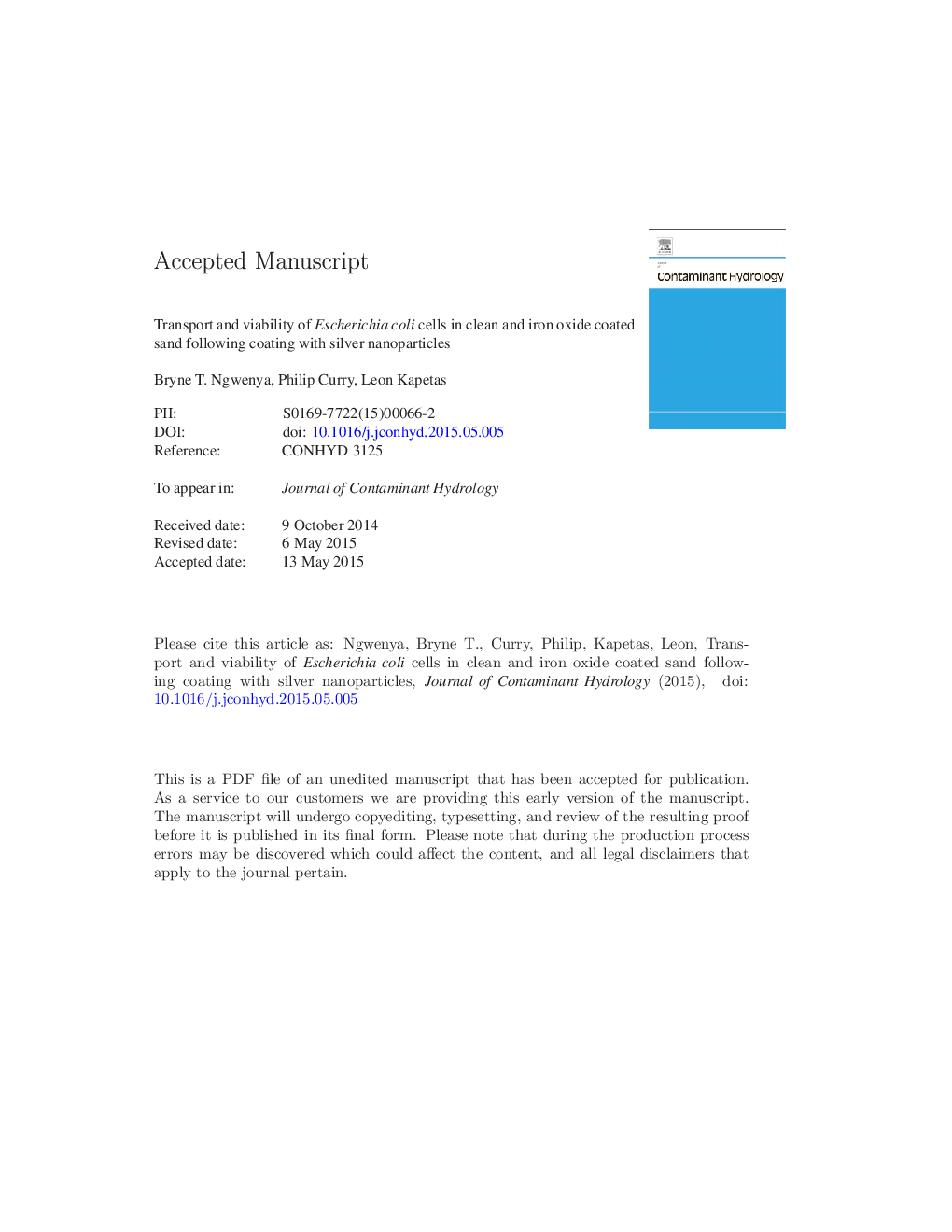| Article ID | Journal | Published Year | Pages | File Type |
|---|---|---|---|---|
| 6386450 | Journal of Contaminant Hydrology | 2015 | 39 Pages |
Abstract
A mechanistic understanding of processes controlling the transport and viability of bacteria in porous media is critical for designing in situ bioremediation and microbiological water decontamination programs. We investigated the combined influence of coating sand with iron oxide and silver nanoparticles on the transport and viability of Escherichia coli cells under saturated conditions. Results showed that iron oxide coatings increase cell deposition which was generally reversed by silver nanoparticle coatings in the early stages of injection. These observations are consistent with short-term, particle surface charge controls on bacteria transport, where a negatively charged surface induced by silver nanoparticles reverses the positive charge due to iron oxide coatings, but columns eventually recovered irreversible cell deposition. Silver nanoparticle coatings significantly increased cell inactivation during transit through the columns. However, when viability data is normalised to volume throughput, only a small improvement in cell inactivation is observed for silver nanoparticle coated sands relative to iron oxide coating alone. This counterintuitive result underscores the importance of net surface charge in controlling cell transport and inactivation and implies that the extra cost for implementing silver nanoparticle coatings on porous beds coated with iron oxides may not be justified in designing point of use water filters in low income countries.
Related Topics
Physical Sciences and Engineering
Earth and Planetary Sciences
Earth-Surface Processes
Authors
Bryne T. Ngwenya, Philip Curry, Leon Kapetas,
